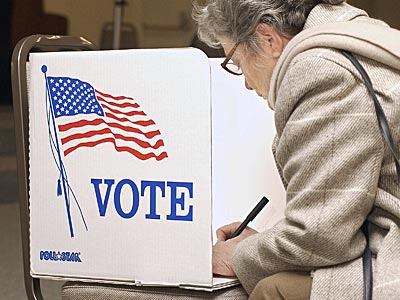Our Election System vs Pure Democracy
Mike Kapic October 1, 2019
An alarming movement is crossing the country, one that threatens the foundation of our presidential election system.
State legislatures are being pressed to endorse the National Popular Vote Interstate Compact (NPVIC) and ignore the democratic and constitutional Electoral College voting procedure in all future presidential elections. If enacted, the compact would leave the election of a president to high-population states and forever disenfranchise voters in less populous states.
In calling for such an unprecedented electoral upheaval, NPVIC supporters say the Electoral College is undemocratic, and so the country needs to instead follow a “one person, one vote” approach to choosing the nation’s highest elected official.
Here’s what we should understand about our Framers’ Constitution and elections:
America was formed as a federal republic composed of united states, with all powers not specifically vested in the federal government reserved for the states. “We the people” and the states are sovereigns, and maintain certain rights, including the power to create and shape a federal government under the Constitution and through state delegations in Congress.
One of the key democratic elements in our republic is the Electoral College, which acts to preserve the powers of the voters in each state in electing the president. Under the system of checks and balances, the Electoral College provides an important restraint on pure democracy. Otherwise, the majority of voters in populous areas would serve to negate the role of smaller regions and the rights of their citizens in choosing a president.
The most difficult issue facing the Founders during the 1787 Constitutional Convention was direct elections. After much debate ending in the Great Compromise, they settled on the current system. Under the constitutional election system, the people would only vote directly for their house representatives. State legislatures would select two senators (who are now elected, after the 17th Amendment). The Framers settled on a democratic hybrid—the electoral college—for presidential elections. Small states threatened not to join the Union if national popular elections were implemented.
Under the current system, each state decides how their electors will vote for president. The typical format varies by state, but generally electors are chosen at state party conventions prior to the presidential election. In December, after the November popular election votes have been tallied, each state’s electors meet and cast their “winner take all” vote (except for Nebraska and Maine) for the state’s winning popular candidate. In early January, Congress counts the Electoral College votes and the winner is inaugurated.
The Framers designed this unique presidential election system to avoid the pitfalls of other failed democracies. Not perfect, but a huge improvement. The bottom line is the people and states were given control of their national government.
The many potential dangers in adopting the NPVIC include:
- It is likely unconstitutional because it negates the role of the states in electing the president and thereby eliminates an important safety check in the Constitution.
- It could increase voter fraud.
- It would destroy federalism.
- It promises chaotic elections with many delays and court rulings.
- It would effectively eliminate small states and their voters from presidential elections.
- It would be the effective death of our republic in exchange for a dangerous pure democracy.
- It would inherently increase the shift of power and prestige from Congress to the executive branch.
- It would eliminate the two-party system and allow the rise of other political parties.
Fear of the electoral college generally stems from a lack of Constitutional understanding and may be driven by the idea that elections (like the one in 2016) can be stolen undemocratically. But the electoral college proves that our democracy works.
The NPVIC is trying to bypass the Constitution to neutralize the Electoral College. Currently, the Constitution can only be changed through Article V, with three-quarters of states (38) approving. Instead, the NPVIC initiative works on the state level through an interstate compact that would go into effect as soon as “states cumulatively possessing a majority of the electoral votes” needed to win an election (270 votes) join the compact. Essentially, this would give the voters of as few as 11 states control over the outcome of presidential elections and give the most populous states a controlling majority of the Electoral College.
Following European countries, the NPVIC would expand the number of political parties, eliminating the stable elections the electoral college provides. America’s hybrid election system strengthens the two-party system and guarantees democratic elections through moderation, stability, and consensus. Increasing the number of parties would potentially enable a candidate to win with only 20% of the vote.
John F. Kennedy equated the NPVIC to taking one planet out of the solar system and watching the whole structure change. It’s like a Rubik’s Cube: Move a color on one side, and the colors on the other side change uncontrollably. There would be unintended consequences.
Our political sensibilities have been drifting from relatively stable republicanism toward unstable democracy for decades. The balance of power is in further jeopardy with the NPVIC.
We must educate certain state legislators on the dangers of direct voting. You can help us protect the uniqueness of our Constitution and America by volunteering with AMAC Action in your state’s Congressional District. Contact the AMAC Action Staff at info@amacaction.org or call (855) 809-6976.
Originally published in The Amac Magazine Sept/Oct 2019

